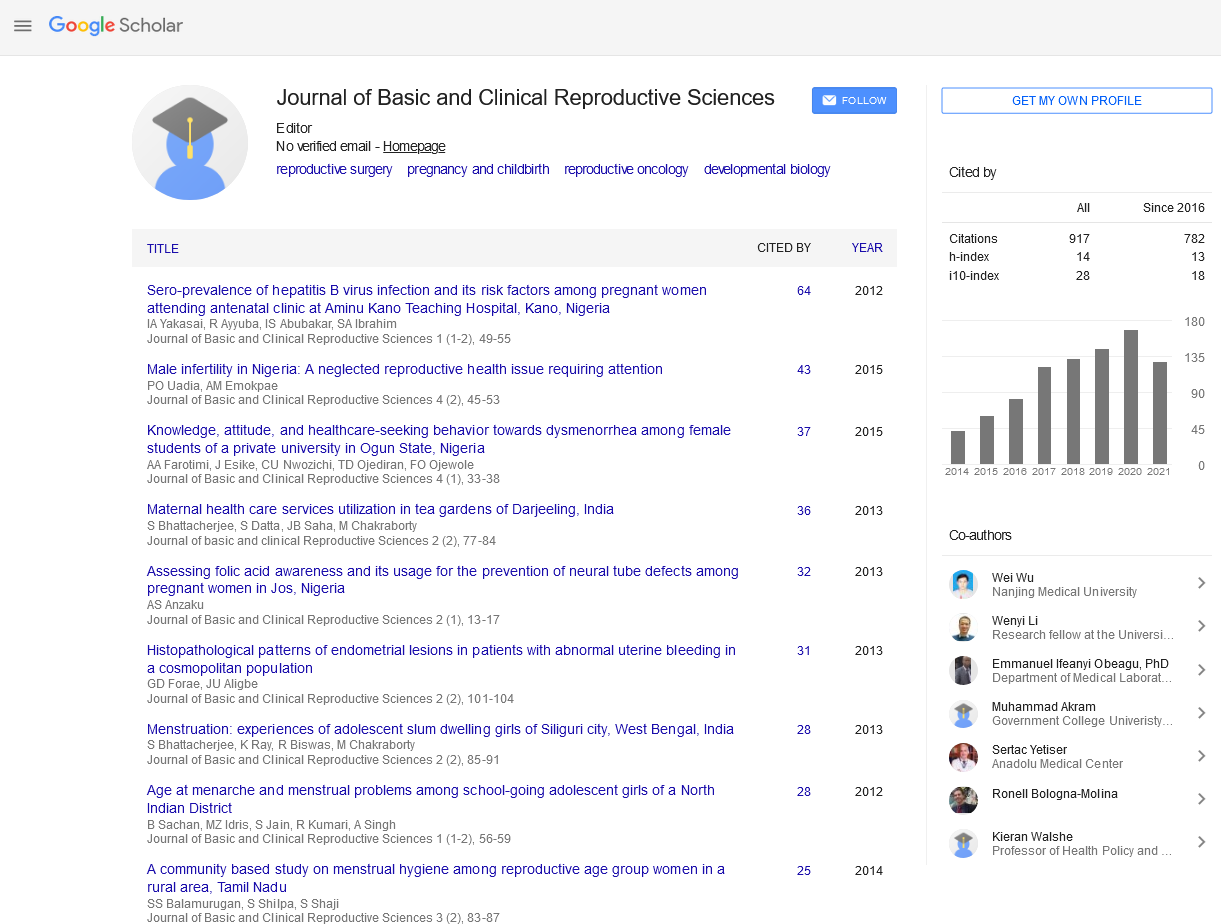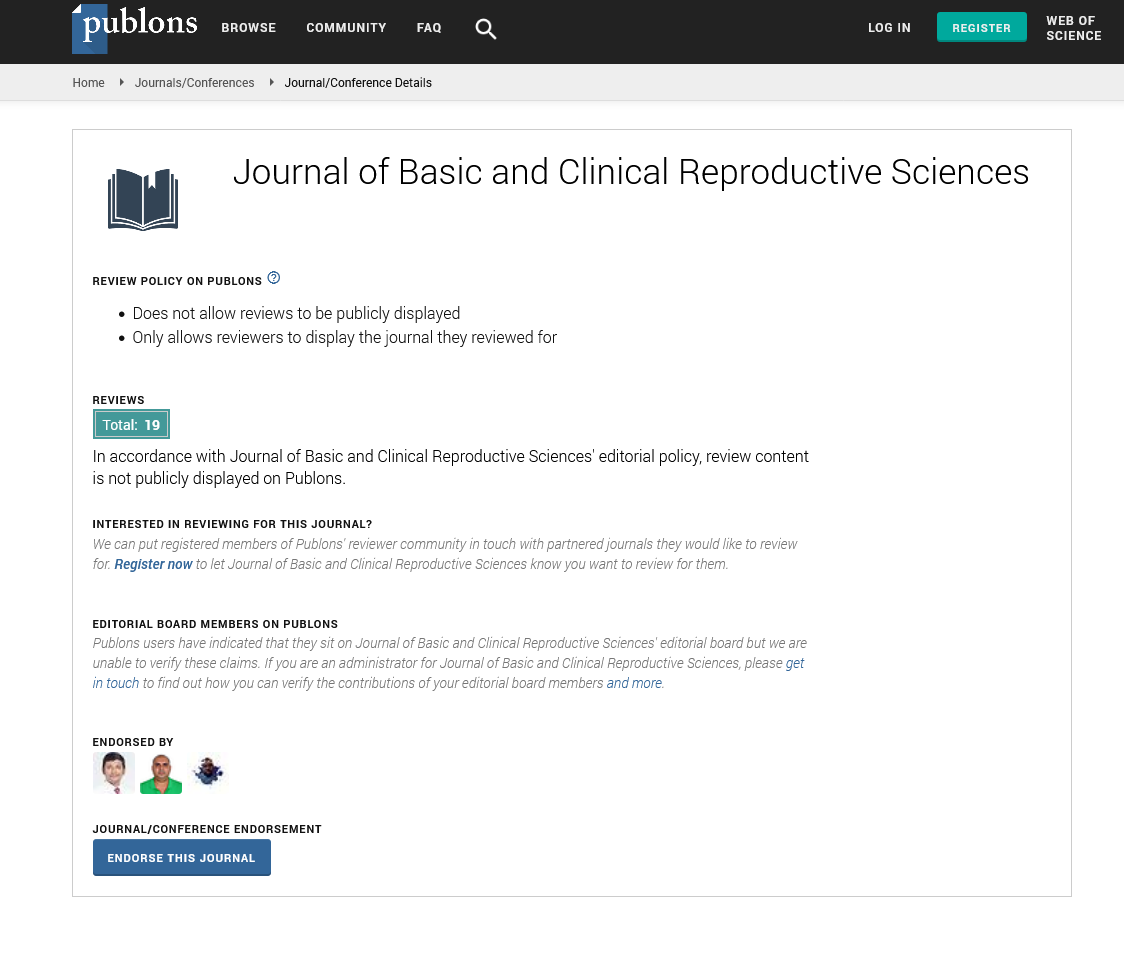Commentary - Journal of Basic and Clinical Reproductive Sciences (2021) Volume 10, Issue 6
Enterobacteria is A Large Family of Gram-Negative Bacteria
Received: 02-Jun-2021 Accepted Date: Jun 15, 2021 ; Published: 22-Jun-2021
This open-access article is distributed under the terms of the Creative Commons Attribution Non-Commercial License (CC BY-NC) (http://creativecommons.org/licenses/by-nc/4.0/), which permits reuse, distribution and reproduction of the article, provided that the original work is properly cited and the reuse is restricted to noncommercial purposes. For commercial reuse, contact reprints@pulsus.com
Introduction
Enterobacteria is a large family of Gram–negative bacteria. It was first proposed by Rahn in 1936, and now includes over 30 genera and more than 100 species. Its classification above the level of family is still a subject of debate, but one classification places it in the order Enterobacterales of the class Gammaproteobacteria in the phylum Proteobacteria. In 2016, the description and members of this family were emended based on comparative genomic analyses by Adeolu. Enterobacteriaceae includes, along with many harmless symbionts, many of the more familiar pathogens, such as Salmonella, Escherichia coli, Klebsiella, and Shigella. Other disease–causing bacteria in this family include Enterobacter and Citrobacter. Members of the Enterobacteriaceae can be trivially referred to as enterobacteria or "enteric bacteria", as several members live in the intestines of animals. In fact, the etymology of the family is enterobacterium with the suffix to designate a family (aceae) not after the genus Enterobacter (which would be "Enterobacteraceae") and the type genus is Escherichia.
Enterobacteriaceae was originally the sole family under the order 'Enterobacteriales'. The family contained a large array of biochemically distinct species with different ecological niches, which made biochemical descriptions difficult.The original classification of species to this family and order was largely based on 16S rRNA genome sequence analyses, which is known to have low discriminatory power and the results of which changes depends on the algorithm and organism information used. Despite this, the analyses still exhibited polyphyletic branching, indicating the presence of distinct subgroups within the family.
In 2016, the order 'Enterobacteriales' was renamed to Enterobacterales, and divided into 7 new families, including the emended Enterobacteriaceae family. This emendation restricted the family to include only those genera directly related to the type genus, which included most of the enteric species under the order. This classification was proposed based on the construction of several robust phylogenetic trees using conserved genome sequences, 16S rRNA sequences and multilocus sequence analyses. Molecular markers, specifically conserved signature indels, specific to this family were identified as evidence supporting the division independent of phylogenetic trees.
The Enterobacteriaceae includes organisms with a wide range of disease–causing potential, encompassing beneficial commensal microbiota, opportunistic pathogens that can inflict considerable morbidity and mortality on compromised hosts, and principal pathogens capable of initiating illness in individuals in perfect health. This variable pathogenic potential is a reflection of the expression, or lack thereof, of specific virulence factors that play roles in the disease process. The precise definition of a virulence factor can be the subject of vigorous debate. Researchers do not agree as to whether structures or functions that are indispensable for disease but that are not specific to pathogens or to the disease process should be considered virulence factors. However, there is general conceptual agreement on the principle of “molecular Koch's postulates,” as articulated by Stanley Falkow.40 By this definition, a trait is considered to be a virulence factor if it is found specifically in strains of a microbe that cause disease; if mutation of a gene encoding the factor results in less severe infection in a suitable model of the disease; and if restoration of a wild–type allele of the gene to the mutant (genetic complementation) results in reinstatement of the original disease severity.
Copyright: © 2021 Ge Zhao. This is an open-access article distributed under the terms of the Creative Commons Attribution License, which permits unrestricted use, distribution, and reproduction in any medium, provided the original author and source are credited


